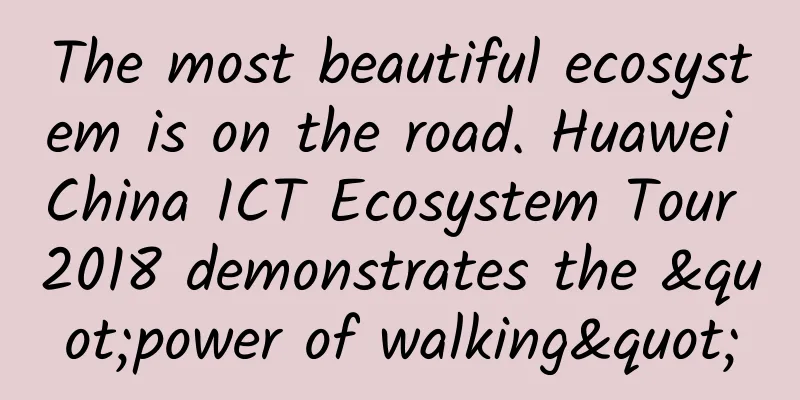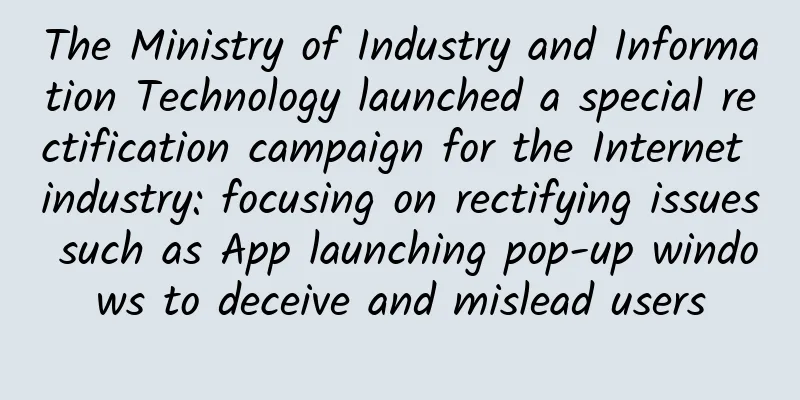5G will bring a range of possibilities to future buildings

|
The fifth generation of mobile networks (5G) is expected to revolutionize the construction industry with its faster speeds and data capacity, as well as lower latency. The technology has the potential to enable faster communications between workplaces, provide safer and more efficient ways to operate equipment, and streamline project management processes. 5G can also help reduce costs by enabling remote monitoring and control of on-site machines from a centralized location. Implementing 5G networks could improve communications in workplace environments due to their high speeds and high-volume data transfer capabilities. For example, employees in different locations could quickly communicate via text or video conference calls without having to wait long hours on traditional phone lines or 4G connections. Additionally, 5G could facilitate real-time tracking systems that send important information instantly, allowing employees to remotely monitor progress from any device connected to the network. Furthermore, 5G technology is expected to have a transformative impact on operational efficiency on site due to its low latency, making it ideal for remotely controlling machinery such as cranes or bulldozers from another location. Machines equipped with sensors can detect problems such as structural damage before they become serious, saving time and money on repairs. In addition, 5G enables automation technologies such as autonomous robots to perform tasks independently, reducing manpower, thereby significantly improving productivity levels. What is 5G?This question has become increasingly important in recent years as the world moves closer to implementing fifth-generation technology. To understand this concept, it’s first necessary to define what 5G means and how it differs from existing wireless networks. The term "5G" stands for the fifth generation of cellular network technology. It refers to the next major evolution in mobile broadband technology, enabling faster data speeds and greater connectivity than ever before. Fundamentally, 5G uses radio waves and advanced antenna technology such as multiple-input multiple-output, millimeter-wave frequencies, beamforming, carrier aggregation, and other cutting-edge technologies to provide higher network traffic capacity with lower latency than current 4G LTE networks. In addition, 5G will provide users with unprecedented access to cloud computing resources through ultra-high-speed Internet connections. As the leading innovation trend of the global Fourth Industrial Revolution, 5G has great potential in enhancing communication services such as streaming media, virtual reality applications, and autonomous vehicle systems. In addition, its ability to support low-latency communications can promote progress in areas such as telemedicine and smart city development. However, no matter how groundbreaking these possibilities are, they may be vulnerable to malicious threats or abuse without appropriate security measures. Therefore, organizations must invest in appropriate countermeasures when deploying 5G infrastructure. In summary, 5G is an essential component of future technology. It is expected to significantly improve wireless networks and bring unprecedented opportunities to businesses in different industries, including the construction industry, which requires strong security solutions to stay safe from cyber attacks while effectively leveraging its advantages. What are the benefits of using 5G in buildings?5G technology offers a plethora of potential benefits to the construction industry. Not only will this revolutionary network offer greater flexibility and efficiency, but it will also significantly reduce costs. As a result, 5G is quickly becoming an essential tool for many businesses in this sector. First, 5G networks can significantly improve communication between all parties involved in a project or job site. Using high-speed connections, data can be shared quickly and securely with minimal delays and interruptions. In addition, real-time video streaming can allow team members to collaborate remotely on projects and tasks without having to meet face-to-face. These enhanced communication capabilities can improve collaboration, leading to faster project completion, higher productivity levels, and reduced overhead costs associated with traditional working methods. Additionally, 5G networks offer unlimited scalability, allowing companies in the construction industry to deploy new applications as needed without the need for additional infrastructure upgrades. With increased flexibility, teams are able to adjust resources based on actual demand rather than relying on predetermined standards or estimates from previous work locations - something that was nearly impossible before 5G. Ultimately, significant cost savings are achieved due to reduced waste in multiple aspects of operations, from material management all the way to strategies for deploying employees in different locations at the same time. The benefits of 5G technology are clear. There is no doubt that its impact will revolutionize the way the construction industry, as well as other industries around the world, operates. It provides unprecedented opportunities to improve efficiency and reduce costs, while allowing teams more freedom in completing their workflows. In short, if businesses hope to remain competitive in today's evolving global economy, they must take advantage of this innovative solution. 5G offers greater flexibility and efficiencyThe construction industry will benefit greatly from the adoption of 5G technology. Improved flexibility is one of the most important advantages that 5G can bring to the industry. It allows for more efficient design, more flexible project management, and better resource utilization. The ability to quickly and securely share large amounts of data between different stakeholders in real time through cloud computing platforms further helps improve project efficiency. In addition, automated processes enabled by 5G technology can make decisions faster during the construction process, so that resources can be appropriately allocated as needed. This reduces delays caused by human error or miscommunication, thereby increasing speed and saving costs. In addition, with the improved tracking capabilities provided by new sensors and low-latency connections driven by 5G networks, contractors can achieve greater accuracy in quality control and safety protocols. 5G technology offers a wide range of potential benefits to the construction industry, helping to transform many areas of operations, including planning, design, scheduling and procurement. Capable of facilitating communication between stakeholders and providing data insights from connected devices such as drones or robots, this next-generation mobile network will enable businesses in the construction industry to become smarter, more agile and ultimately more profitable, while also helping them achieve their sustainability goals. 5G technology has the potential to disrupt the construction industry by ushering in a new era of automated processesAutomation is often seen as an efficient and cost-effective way to manage the complex tasks that are necessary for large projects. By implementing automation in various aspects of the construction workflow, companies can benefit from increased flexibility and efficiency while reducing labor costs. With the faster speeds of 5G networks, automation technologies such as robots and automation software become easier to use and more reliable. The use of robots can help reduce human errors, improve site safety levels, and increase productivity. Robots can automate dangerous tasks such as demolition and excavation that require skilled workers to perform manually. In addition, robotic machines can be used in landscaping or building reinforcement applications that involve repetitive movements over long periods of time. Automation software provides a comprehensive view of construction project progress with real-time updates, enabling stakeholders to make informed decisions quickly and accurately. The automation system allows users to track material usage, monitor performance data in real time, create digital simulations to predict future results, schedule deliveries efficiently, and provide access control systems for secure on-site monitoring. In addition, some types of automation software allow for remote collaboration between teams across multiple locations, which enhances communication between members at different stages of project execution. In short, the advent of 5G technology creates exciting possibilities in the construction industry through the adoption of advanced automation technologies such as robotics and automated software. These technologies have the potential to increase workflow efficiency, improve accuracy, and reduce costs compared to traditional methods. Construction industry to reap rewards from 5G in terms of connected devicesIn order to reduce costs and improve efficiency, some construction companies have begun to leverage the power of smart device connectivity. For example, Caterpillar Inc., one of the world's largest heavy equipment manufacturers, is using its own "Cat Connected Technologies" platform to remotely monitor its construction equipment from anywhere in the world. The system helps improve safety, reduce machine downtime and optimize production processes. Other companies have also implemented remote monitoring systems that provide real-time data on the status and performance of machines on the job site. These systems can alert workers when maintenance is needed on a specific machine, or track fuel consumption levels for more efficient use. By connecting machines to each other through 5G networks, it will be easier for construction teams to automate many laborious tasks, such as inventory management and asset tracking. Additionally, the advanced analytics capabilities made available by 5G can give operators greater insight into how their projects are performing against the deadlines and budgets set at the start of the project. Additionally, operators can quickly identify potential issues before they impact schedules or cost overruns occur. With this new level of insight into operations, operators will be able to make decisions faster, thereby improving overall productivity on the jobsite. 5G technology has the potential to facilitate improved collaborationThe potential of 5G technology to revolutionize the construction industry is further enhanced by its ability to facilitate improved collaboration. With 5G, teams working in different locations or locations can now conduct remote teams and virtual meetings. Moreover, interactive platforms can be used even when there are a large number of participants. This enables stakeholders such as architects, engineers, and contractors to easily collaborate on projects from anywhere in the world, regardless of their location. Additionally, real-time communication tools enabled by 5G can help improve productivity and reduce delays caused by miscommunication between team members. Here are three ways to do this:
In addition, 5G also offers superior security features compared to other wireless technologies, allowing companies to better control important information shared in collaborative activities, such as design reviews and problem-solving sessions held remotely among global stakeholders. It provides better protection against cyber threats and ensures that confidential information remains secure when it is digitally exchanged between parties working on a common project, thereby promoting smoother collaboration at all stages of development in the construction industry, significantly improving overall efficiency. 5G technology revolutionizes project managementThis is because 5G is able to provide real-time data, enabling efficient decision-making and task delegation. Project planning is enhanced through more accurate estimates of resource usage, labor costs, and overall timelines. In addition, the increased level of communication between different stakeholders makes it easier to coordinate activities between teams working remotely. Project managers will be able to gain greater insight into the performance of their projects. By leveraging AI algorithms to evaluate data generated over 5G networks, it will be possible to determine which tasks require attention or modification, while predicting potential problems before they arise. 5G also makes it possible to monitor a wide range of parameters, such as the number of workers at any given time or the resources used at each job site. This enables project managers to take proactive action when needed and ensure that all work is completed safely and efficiently. In terms of construction management, 5G technology improves visibility into the progress of each project, including materials used, timelines adhered to, and safety measures implemented. This helps improve collaboration between different departments involved in a construction project and achieve better results in quality control and compliance with regulations. In addition, these tools enable contractors to keep up with changing industry standards and track current trends so that they can make informed decisions about their next steps. All in all, 5G significantly improves project management capabilities in the construction industry, increasing the efficiency and effectiveness of the entire workflow from start to finish. Incorporating it into existing processes offers various opportunities to further advance project management. 5G has the potential to simplify supply chain managementThe construction industry is on the brink of a revolution powered by 5G. This enhanced connectivity and intelligence can streamline the supply chain, reduce errors and optimize inventory management across projects. Here are some of the ways 5G can revolutionize the way you manage supply chain operations:
5G offers great potential for improving supply chain management in the construction industry, streamlining operations and increasing overall efficiency. It provides new opportunities for businesses that want to stay ahead of their competitors and take advantage of today’s latest technologies. As this technology continues to develop, it is expected to revolutionize the way operations are conducted in this sector, making it easier than ever for businesses to succeed in the global market. 5G offers numerous security enhancementsThe implementation of 5G technology in the construction industry offers a plethora of safety enhancements. First, standardized safety protocols can be established and monitored through a central network. This will enable supervisors to monitor whether workers are following regulations, such as wearing protective gear or holding valid certificates. In addition, real-time data about incidents can be tracked more effectively than ever before, allowing better preventive techniques to be employed to reduce their occurrence. Finally, health monitoring systems embedded in 5G infrastructure can track vital signs and alert medical personnel when necessary, such as if a worker is injured on the job site. In addition to these safety benefits, 5G networks offer other capabilities, allowing remote access to equipment on the construction site and improved communications between colleagues working in different project areas. This provides greater flexibility in resource management while enabling operators to operate machines remotely without sacrificing productivity levels. All in all, 5G technology offers many opportunities to improve workplace safety standards in the construction industry. By facilitating the standardization of safety protocols and establishing comprehensive accident prevention strategies, as well as providing advanced health monitoring capabilities, it is poised to revolutionize the way construction sites around the world operate. 5G offers opportunities to reduce costs5G technology could revolutionize the construction industry by providing a more efficient and safer working environment. However, it is also important to consider how 5G technology can provide companies in this field with the opportunity to reduce costs. The following will introduce 5G's potential to reduce labor costs, project costs and overall operating expenses. 5G has proven itself to be a powerful tool that can help reduce labor costs in the construction industry due to its ability to accurately track employee performance and timesheets. This helps ensure that accurate payrolls are generated while preventing fraudulent activities such as impersonating employees or overcharging clients. By using real-time data collection tools, employees can be monitored remotely with minimal supervision, thereby increasing efficiency and saving costs for employers. In addition, advanced analytics enable organizations to easily identify process improvements, which can further reduce costs through increased productivity levels. Project costs can also be reduced through 5G capabilities such as remote site monitoring and automated system control functions. For example, automated video surveillance cameras integrated into 5G networks mean that sites can be monitored at all times without the need for human presence. In addition, cloud computing technology combined with intelligent automation systems can enable faster decision-making processes based on the data collected, thereby saving more costs over the project life cycle. In summary, 5G technology offers significant advantages when it comes to reducing the operational expenses associated with running a business in the construction industry. Upfront investments in new software solutions and hardware equipment are necessary, however, these initial outlays will quickly pay off due to the long-term cost savings that these technological advances bring. Therefore, companies should invest their resources in leveraging the vast potential of 5G so that they can benefit from reduced labor, project and operating costs as well as improved safety standards. 5G brings new opportunities for business modelsThe development of 5G networks has brought new opportunities to the construction industry, especially in creating innovative business models. Construction companies can now use smart building solutions as part of their operations and can also benefit from automation technologies that help improve efficiency and accuracy in completing projects. In addition, 5G technology can improve communication between project stakeholders and simplify processes such as decision-making and resource management. Since 5G networks offer faster data transmission speeds and lower latency, this can enable real-time monitoring of construction sites during the construction process. This is beneficial for ensuring that projects adhere to sustainable construction practices, such as reducing carbon emissions or increasing energy efficiency levels. In addition, by collecting large amounts of data about the environment, on-site sensors can optimize safety standards and reduce the occurrence of errors due to human negligence. 5G not only offers a range of possibilities for enhancing existing business models, but also paves the way for entirely new approaches to construction projects. By leveraging these capabilities, contractors can develop creative solutions with greater flexibility while reducing the costs associated with traditional manual labor on site. As a result, businesses are becoming increasingly powerful through digital transformation enabled by 5G technology. 5G provides smart building solutionsWith the advent of 5G technology, smart building solutions have the potential to be even more revolutionary. Ironically, this could mean that buildings become “smarter” than people! This could be achieved by integrating building automation and energy efficiency into existing structures without significantly changing their architecture or design. Smart building solutions have been around since the late 1990s, but their scope was limited due to slow network speeds. With 5G’s faster connection speeds and higher bandwidth capacity, it creates better opportunities for smart buildings to interact with other devices and systems connected to them. Automation of lighting fixtures, climate control systems, security cameras, elevators, and more will no longer require complex wiring systems, as these tasks can now be easily accomplished wirelessly over 5G networks. Additionally, energy-saving sensors integrated into walls can detect temperature changes throughout a building and adjust settings to maximize energy savings while providing superior comfort. Compared with traditional methods, implementing these technologies can not only improve safety standards, but also improve operational performance at a lower cost. In addition, it can also remotely monitor facilities anytime and anywhere, providing convenience for owners who want to remotely track assets. All these advantages combined make smart building solutions one of the most exciting developments of 5G technology in today's construction industry. Leveraging 5G to enable sustainable building practicesThe construction industry is changing rapidly, especially with the introduction of 5G technology. This new wireless system provides a platform for sustainable building practices to become more efficient and cost-effective. Green building initiatives are becoming increasingly popular as they promote lower energy consumption and less waste. By using renewable materials such as bamboo and recycled plastics in the construction process, developers can reduce their carbon footprint while still meeting or exceeding safety standards. Additionally, by using energy-efficient technologies such as LED lighting systems and automated climate control solutions, builders can further their commitment to sustainability without sacrificing performance. In addition, 5G technology also enables remote monitoring capabilities, allowing builders to track and analyze site conditions from anywhere in the world. With this real-time data collection and analysis capability, contractors can better manage on-site resources, thereby increasing work efficiency and improving safety protocols on the job site. This will also lead to faster completion rates, thereby saving costs, ultimately benefiting both businesses and consumers. As 5G continues to revolutionize the way buildings are built, it is clear that green building practices will increase across all industries around the world. These advances give us the opportunity to make significant progress toward environmental sustainability goals while improving job security in these fields. What are the challenges of adopting 5G?The building industry is one of the world’s largest energy consumers, accounting for nearly 40% of global electricity. With the introduction of 5G technology, it can revolutionize itself and adopt a more sustainable approach. However, certain challenges must be addressed to ensure successful adoption and implementation. First, the infrastructure required to implement 5G technology is complex and expensive. Building this infrastructure requires a lot of capital, which often acts as a deterrent to businesses or governments looking to invest in 5G networks. In addition, different regulations on spectrum allocation from country to country and other legal barriers can create difficulties. This can make it difficult for organizations aiming to deploy 5G-enabled solutions around the world. Finally, it is also challenging to convince end users of the potential benefits of using new technologies such as 5G because they are unfamiliar with them. To overcome this, vendors must demonstrate how these technologies can increase productivity while reducing costs – a key factor in trying to convince those considering upgrading existing systems or services. In summary, adopting 5G technology presents several challenges that must be considered before investing in implementation across the construction industry, ranging from financial considerations and technical complexities to user acceptance issues. The future of 5G constructionThe 5G revolution will bring unprecedented changes to the construction industry. Smart buildings, enabled by fifth-generation technology, can complete projects of any size and scope quickly and efficiently. By connecting physical objects into a network that allows them to communicate with each other, project automation can be achieved at an unparalleled level. This connectivity creates greater visibility in all aspects of the construction process, from planning to implementation. Smart construction reduces errors and delays while improving safety and productivity on the jobsite. Automation of tasks such as estimating job costs, scheduling resources, monitoring progress, and tracking materials and equipment can significantly reduce the time spent manually managing these activities. In addition, real-time analytics generated through 5G connectivity provide valuable insights into project performance that can inform future operational decisions. 5G technology has the potential to completely reshape the way the construction industry operates by introducing smarter ways of working and increasing efficiency levels at every stage of the project lifecycle. Through this revolutionary shift, companies will benefit from faster processes and lower costs, while improving quality control measures and ensuring successful outcomes. Although challenges related to integration and adoption still need to be addressed before widespread use can be achieved, 5G promises to bring a brighter future to the industry as a whole. 5G adoption will revolutionize the construction industryBy providing greater flexibility and efficiency, as well as automation and connectivity technologies, 5G can facilitate the shift towards sustainable building practices, and do so with greater speed and accuracy. Smart building solutions enabled by 5G will also enable more efficient use of resources while creating safer workplaces. Despite these advantages, there are still challenges to overcome before full integration into construction operations can be achieved. Further research is needed to ensure seamless interaction between wireless devices across multiple networks, as well as to improve safety standards for such systems. In addition, new regulations may have to be implemented when using autonomous machinery on work sites. In summary, 5G opens up a range of possibilities for future buildings, from smart buildings that reduce waste and create healthier environments, to faster project delivery times through automation - all based on reliable and secure connections that enable real-time data exchange between teams working remotely or on-site. The era of smart buildings has arrived, bringing unprecedented and exciting opportunities to the industry. |
<<: What is Power over Ethernet (PoE)?
>>: A article about connection and socket
Recommend
5G market is rapidly expanding and artificial intelligence scenarios are becoming a reality
[[183832]] In response to the explosive growth of...
HostDare: CN2 GIA line CSSD series 15% discount from $30/year, CKVM series 10% discount from $45/year
HostDare continues to offer discount codes for CN...
At the 2017 Asia Pacific CDN Annual Conference, Yunfan Accelerator was awarded the title of "Excellent Service Quality Enterprise"
On November 14, 2017, the 2017 Asia-Pacific CDN A...
Why are 5G private networks favored by countries with developed manufacturing industries?
Currently, private networks are increasingly used...
DesiVPS: Los Angeles 1Gbps unlimited traffic VPS for $22 per year, supports free IP change
DesiVPS has launched the Year End Stock Clearance...
What is the difference between wireless repeater and Mesh? This article will teach you how to use your home network well
At present, people's lives are becoming riche...
[Black Friday] AlphaVPS: AMD Ryzen series from €15.99/year, large hard drive VPS from €19.99/year, Los Angeles/Germany/Bulgaria data centers
Bulgarian hosting provider AlphaVPS also launched...
Can IoT survive downtime?
Asia has high hopes for the Internet of Things. I...
Communication styles in microservices architecture
In a microservices architecture, communication is...
RAKsmart New Year's Big Offer: E3 servers starting at $30/month, new Korean servers, Hong Kong/Japan/US cluster servers, VPS monthly payment starting at $1.99, GPU servers, high-defense servers
RAKsmart has launched a New Year's Big Sale. ...
Riverbed China Survey: There is a huge gap between digital vision and digital performance
[Beijing, July 3, 2018] Digital performance compa...
Demystifying gRPC: Unleashing Lightning-Speed Communication
Before we dive into the details of gRPC, it is im...
NexusBytes: $4/month KVM-1GB/15GB/250GB/Japan data center
NexusBytes describes itself as a one-person compa...
Radio Administration Bureau explains 5G frequency planning: 3GHz to 6GHz take the lead
5G frequency has been a hot topic at various wire...









